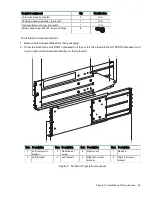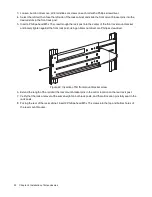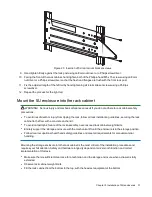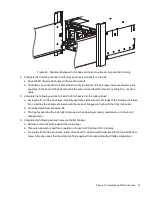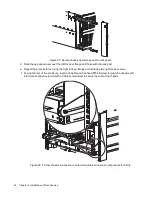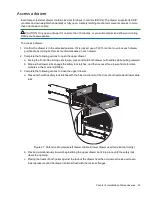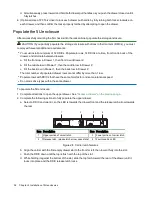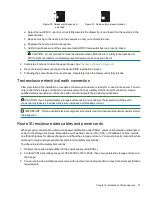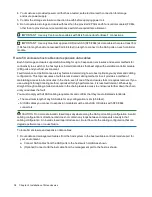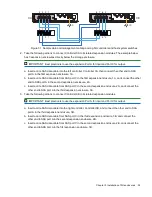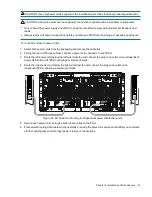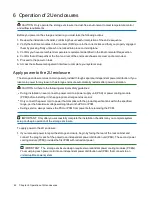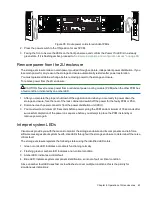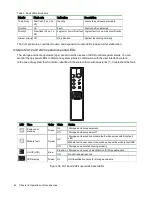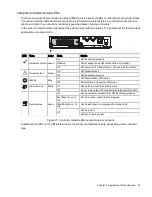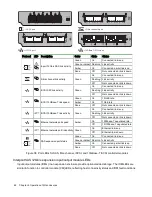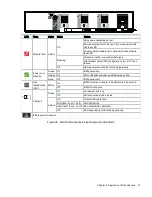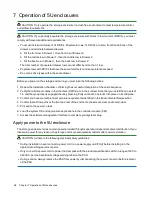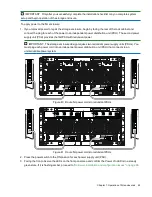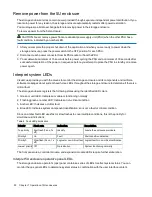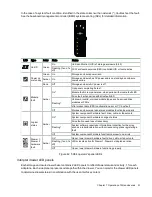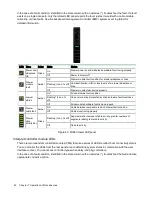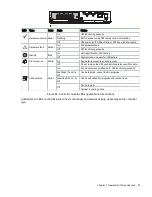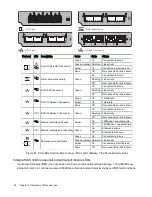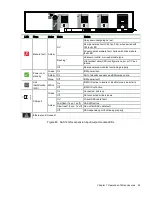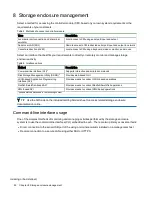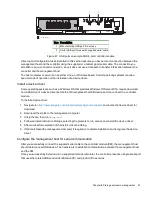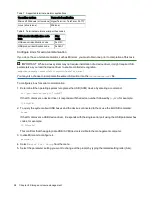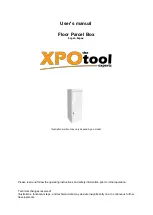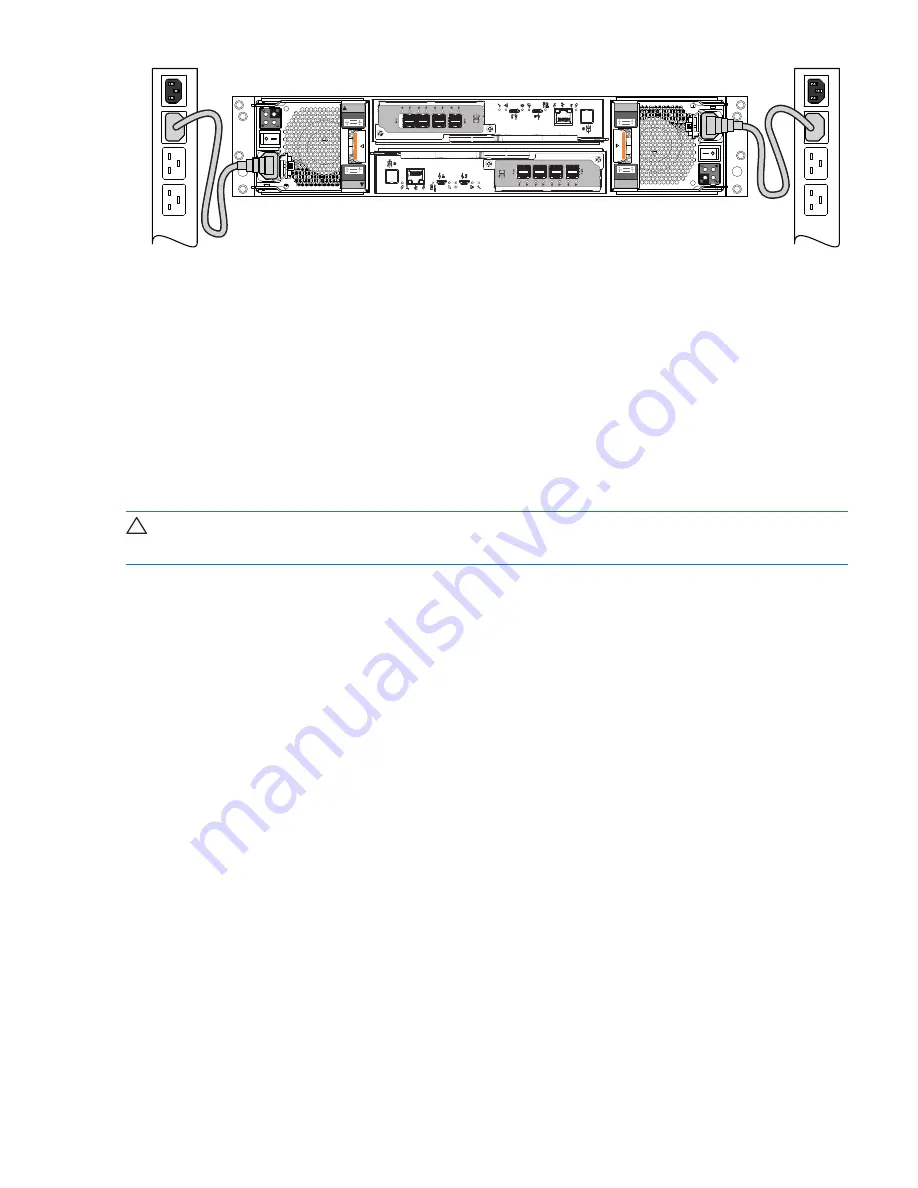
Chapter 6 Operation of 2U enclosures
43
12Gb/s
12Gb/s
Figure 35 Route power cords to redundant PDUs
2. Press the power switch to the ON position for each PCM.
3. Facing the front, observe the LEDs on the front panel area and confirm the
Power On
LED is in a steady
green state. If it is flashing amber, proceed to
"Hardware installation and configuration issues" on page 68
.
Remove power from the 2U enclosure
The storage enclosure relies on main power provided through separate, independent power distribution. If you
lose main power for any reason, the storage enclosure automatically restarts after power restoration.
You must quiesce all data exchange before removing power to the storage enclosure.
To remove power from the 2U enclosure:
CAUTION Never remove power from a redundant power cooling module (PCM) when the other PCM has
a fault condition, indicated by an amber LED.
1. After you complete the proper shut down of the application and when you are ready to power down the
storage enclosure, face the rear of the rack cabinet and switch off the power for the faulty PCM or PSU.
2. Disconnect each power connector from the power distribution unit (PDU).
3. You must wait a minimum of 15 seconds before power cycling the PCM and a minimum of 30 seconds after
successful completion of the power on sequence before you attempt to place the PCM in standby or
remove power again.
Interpret system LEDs
Visual cues provide you with the means to monitor the storage enclosure and its components and reinforce
software messages about system health. Use LEDs throughout the storage enclosure to determine if there is a
critical fault.
The storage enclosure registers the following states using the identified LED colors.
1. Green or unlit LED: Indicates a module is functioning normally
2. Flashing green or amber LED: Indicates a non-critical condition
3. Amber LED: Indicates a critical fault
4. Blue LED: Indicates system component identification, so is not a fault or critical condition
Since an amber fault LED uses fast or slow flashes to cover multiple conditions, this is the priority for
simultaneous indications:

